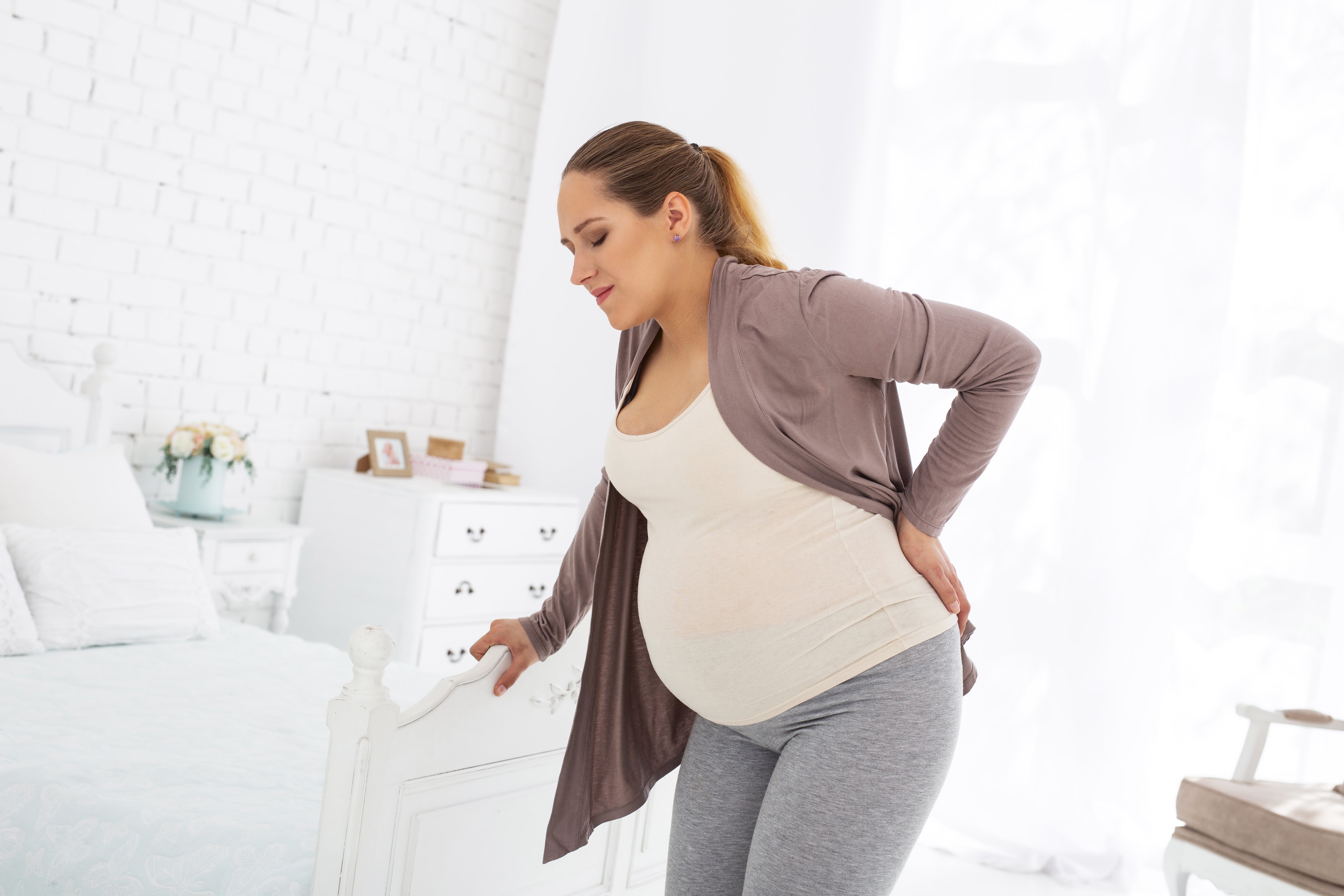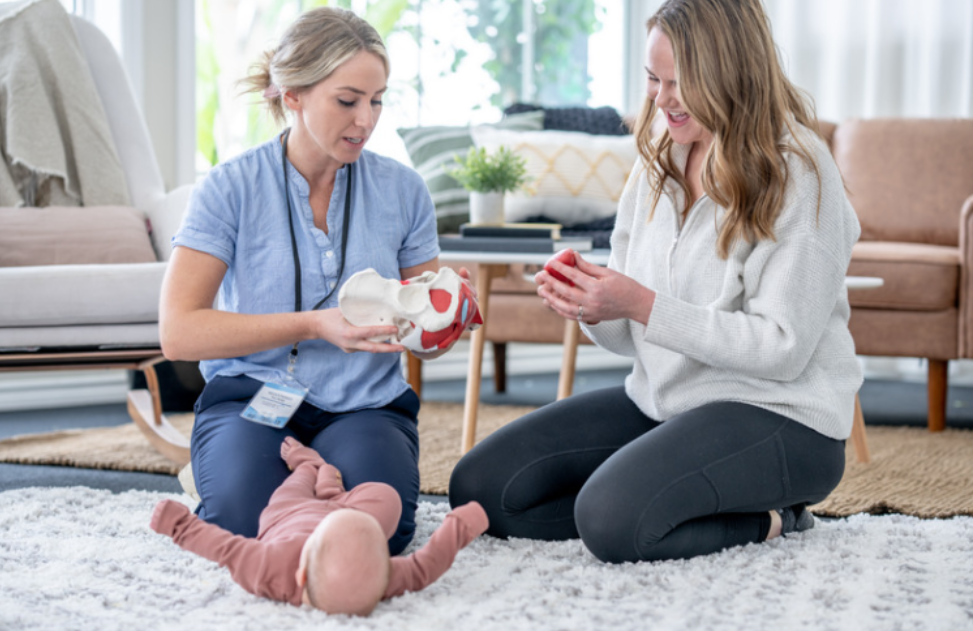5 Ways to Ease Sacroiliac Joint Pain During Pregnancy
Your body undergoes numerous changes during pregnancy. One of these changes is the loosening of ligaments, particularly around the pelvis, which can lead to sacroiliac joint pain or SIJ pain. This pain is felt in the lower back, hips, or buttocks, and can make even simple activities like walking or sitting uncomfortable.
Understanding how to manage and alleviate this discomfort can make a world of difference for expecting mums. Let’s dive into practical tips and insights to help you navigate this aspect of pregnancy with greater ease.
What is SI Joint Pain and Why Does it Happen During Pregnancy?

SI joint dysfunction is a common culprit behind chronic lower back pain, affecting 15 to 30% of individuals, and is even more prevalent among pregnant women. This occurs when the joints and ligaments in the tailbone and pelvic area shift and loosen, causing pain and discomfort in the lower back, buttocks, or hips.
The risk of SI joint pain increases during pregnancy due to physical and hormonal changes. Relaxin, a hormone released during pregnancy, makes the joints more elastic to accommodate the growing baby. However, this added flexibility also makes the joints more vulnerable. [1] The extra weight from the baby and the shift in your centre of gravity further increase pressure on these joints, contributing to the development of SI joint pain.
What are the Signs of Sacroiliac Joint Pain?
Every person can experience SIJ pain differently. However, common symptoms may include:
- Lower back pain
- Pain in the buttocks, hips, and pelvis
- Groin pain
- Stiffness or burning sensation in the pelvis
- Difficulty standing up
- Pain that radiates down to one or both legs
- Weakness in the legs
How to Manage Sacroiliac Joint Pain During Pregnancy?
The good news is that there are several ways you can alleviate SIJ pain. Here are five effective strategies you can follow:
1. Maintain Proper PosturePoor posture can place extra strain on your lower back and pelvis, especially when your body is already working hard to support your growing baby. Focus on standing and sitting with your back straight, shoulders relaxed, and your weight evenly distributed on both feet. When sitting, use a chair with good lumbar support or place a small pillow behind your lower back to keep your spine aligned and reduce pressure on your SI joint.
2. Wear Compression Garments

Compression garments are specially designed to stabilise joints, alleviating sacroiliac joint pain by providing extra support to the pelvic region and lower back. They also help reduce pressure and minimise discomfort as the body adjusts to the additional weight. Many mums find that wearing them during physical activity or long periods of standing helps improve their mobility and overall comfort.
SRC maternity shorts and SRC maternity leggings are endorsed by the Australian Physiotherapy Association and the Australian College of Midwives for treating pelvic pain, lower back pain, mild varicose veins, and vulvar varicosities. These garments deliver gentle and constant compression to the pelvic area, which helps activate muscles and promote core stability to alleviate SIJ pain.
3. Exercise RegularlyExercising boosts overall health and helps manage sacroiliac joint pain by strengthening the muscles surrounding your hips and lower back. Strengthening the pelvic floor muscles through abdominal and pelvic floor muscle training helps stabilise the pelvic region. These exercises not only help alleviate pain in the SI joint but also aid in improving pregnancy-related diastasis recti abdominis (DRA), which is one of the culprits behind weakened abdominal muscles and abdominal pain. [2]
Some of the exercises you can safely do at home are:
- Sitting on an exercise ball
- Forward leaning with arm activation
- Sit-ups in slings
- Hip elevation in standing
- Pelvic floor in standing
- Abdominal rotation with resistance bands
- Single arm press with resistance bands
Additionally, 20-30 minutes of gentle, low-impact exercises like walking or prenatal yoga can improve your posture, enhance joint stability, and ease tension in your muscles. Always consult with your healthcare provider before starting any workout, listen to your body, and avoid exercises that cause strain or discomfort.
4. Do Heat and Cold TherapyAlternating between heat and cold therapy is an effective way to relieve pregnancy SIJ pain. Applying a warm compress or heating pad to the lower back can help relax tight muscles and improve circulation, reducing pain and stiffness. On the other hand, using a cold pack can reduce inflammation, providing immediate relief. [3]
Alternating between them can be especially helpful after physical activity or when pain is more intense. Always use a non-toxic heat and cold pack to protect your skin.
5. Seek Massage and Physical TherapyProfessional massage and/or physical therapy can be a game-changer when it comes to managing sacroiliac joint pain during pregnancy. A skilled prenatal massage therapist can target the muscles around your lower back and hips, relieving tension and improving circulation.
Physical therapy, on the other hand, focuses on specific exercises and stretches that help stabilise the pelvis and alleviate joint pain. Your physical therapist can also teach you techniques for better posture and movement, reducing strain on your SI joint in everyday activities. Regular sessions can help manage pain and improve your overall mobility.
What Not to Do with SI Joint Pain?

When dealing with pregnancy SI joint pain, there are certain activities and habits to avoid to prevent further discomfort or injury:
1. Avoid High-Impact ExercisesHigh-intensity workouts can worsen SI joint pain by placing additional stress on your pelvis and joints. Activities that involve running or jumping are some of the exercises to avoid for sacroiliac joint pain recovery. Instead, opt for low-impact activities like walking, swimming, or prenatal yoga to keep your body moving without overloading your joints.
2. Don’t Sit or Stand for Long PeriodsProlonged sitting or standing can stiffen your SI joint, leading to more pain. If your routine involves sitting or standing for extended periods, take regular breaks to walk, stretch, or lie down. Maintaining a balance between movement and rest is key to minimising discomfort.
3. Avoid Wearing Unsupportive FootwearAvoid wearing high heels or shoes without proper support, as they can affect your posture and increase strain on your lower back and pelvis. Choose comfortable, flat shoes with good arch support to help maintain proper alignment and reduce the impact on your SI joint.
How to Sleep When Pregnant With Si Joint Pain?
The Weill Cornell Medicine Center for Comprehensive Spine Care suggests avoiding sleeping on the side of the affected joint. For sacroiliac joint pain relief, one sleeping position you can try is lying on the side with your painful side facing up and putting a pillow between your knees. You can also lie on your back with a cushion under the knees to keep your hips, pelvis, and spine aligned.
If you’re still uncomfortable, try switching your mattress to flexible foam with a medium-firm or firmer cushion. While softer mattresses may seem more comfortable, they don’t provide the stability and support your body needs while you’re sleeping.
When to Call Your Doctor
If your pain radiates down your legs with a sharp, shooting sensation, or if it doesn’t improve with home remedies, it’s important not to ignore it. These could be signs of more serious conditions requiring medical attention. Always consult your healthcare provider if your pain worsens or doesn’t improve.
Take Proactive Care of Your Joint Health
Managing SI joint pain during pregnancy involves a combination of self-care strategies, professional guidance, and attentive monitoring of symptoms. Don’t ignore the signs and assume the pain will simply go away on its own. By taking proactive steps and addressing the discomfort early, you can prevent the pain from worsening, allowing you to focus on your pregnancy and maintaining your overall well-being as a mum-to-be.
References:
- https://www.healthline.com/health/si-joint-pain#causes
- https://pubmed.ncbi.nlm.nih.gov/38472049/
- https://www.medicalnewstoday.com/articles/what-does-sacroiliac-joint-pain-feel-like
- https://www.healthline.com/health/back-pain/what-is-the-treatment-for-sacroiliac-joint-pain#overview
- https://ncbi.nlm.nih.gov/pmc/articles/PMC3743693/
FAQs
1. How can I speed up my SI joint recovery?
A combination of rest, gentle stretches and exercises, physical therapy, and ice and heat therapy can improve your symptoms. [4] A physical therapist can teach you gentle exercises to strengthen and heal the muscles around your SI joint. Work out regularly and keep it a habit to watch your posture at all times. If the pain is not going away as expected, talk to your doctor.
2. When does SI joint pain start in pregnancy?
While joint pain can happen at any point during pregnancy, it is more likely to occur during the second and third trimesters. This is due to the growing uterus, which can cause some of the core muscles around the pelvis to stretch and weaken.
3. Does sacroiliac pain ever go away?
Yes, but only with adequate rest or, in some cases, treatment. For many people, the pain is temporary and improves with interventions such as physical therapy, exercises, and lifestyle adjustments. During pregnancy, SI joint pain often subsides after childbirth as your body returns to its normal state. However, it’s essential to address the symptoms early to prevent long-term discomfort.
4. What happens if SI joint pain is left untreated?
Apart from chronic discomfort and worsening pain, SI joint pain can lead to permanent joint damage and disability. This can limit mobility in the lower back, hips, or legs, affecting your ability to perform everyday activities such as walking, bending, or lifting.
5. Is massage good for sacroiliac joint pain?
Yes, gentle and targeted massage can be highly beneficial for sacroiliac joint pain as it helps relax tense muscles surrounding the SI joint, improve circulation, and relieve pressure in the lower back and pelvis. This can provide temporary relief from pain and promote overall relaxation. Always consult your healthcare provider before starting any new treatments during pregnancy.
6. Can a pregnant woman go to the chiropractor with SI joint pain?
Massage therapy and chiropractic care are safe and effective evidence-based treatments for pregnant women with lower back and pelvic pain. [5] If you’re planning a visit to a chiropractor, it is recommended to seek a professional who is experienced in treating pregnant women.













